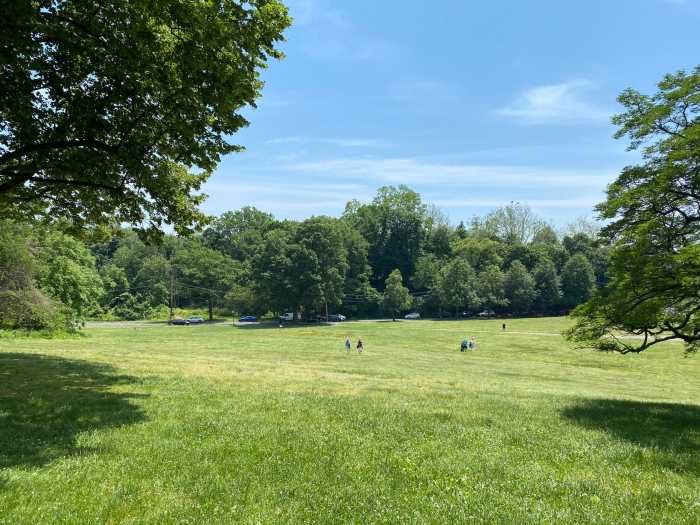A Bayside-based lawmaker is calling on the city to remove a controversial northeastern Queens bike lane project that he says is unsafe.
Assemblyman Edward Braunstein is the latest community leader to speak out against the city Department of Transportation’s (DOT) project along Northern Boulevard, which brought a protected bike lane to the roadway between Douglaston Parkway and 223rd Street. One westbound lane of traffic was eliminated to make way for the new path.
The bike lanes were first presented by DOT to Community Board 11 (CB11) in June 2017. The proposal followed the August 2016 death of 78-year-old Michael Schenkman, who was cycling at the location when he was struck by a vehicle.
After initially giving the project the green light in June, CB11 officially rescinded its decision in early September, citing safety concerns. Board member and retired engineer Bernard Haber formulated his own plan, which would expand the existing sidewalk on the westbound side of the Northern Boulevard to create a shared pedestrian/cyclist path. The plan was first presented in July and sent to DOT.
On Dec. 5, Braunstein called on the city to remove the project, now complete, and continue studying the feasibility of the Community Board’s plan.
According to the lawmaker, the DOT “continues to offer ineffective changes to fix the glaring defects in this project.”
“It is clear that the bike lane on Northern Boulevard was poorly designed and hastily constructed and is unsafe for motorists and bicyclists alike,” Braunstein said. “It is the responsibility of DOT to anticipate problems before installation to prevent cars from getting impaled on jersey barriers and prevent motorists from driving on the bike lane itself.”
“We can’t allow our roads, especially a major artery like Northern Boulevard, to be turned into an experiment where people are put at risk,” he added. “DOT can try to spin the accident statistics, but the pictures don’t lie: numerous crashes have occurred specifically due to the bike lane and it needs to be removed as soon as possible.”

In a statement, Joseph Marziliano, Community Board 11 district manager, said the board has been “working tirelessly” with the lawmaker “to mitigate the danger caused by this bicycle lane and implement a safer pedestrian/bicycle pathway.”
Sean M. Walsh, president of Douglaston Civic Association, called the project “a disaster,” attributing the bike lanes as the cause of over 11 car accidents.
Fellow state legislator Senator Tony Avella has been vocal in his opposition to the DOT plan since construction began over the summer. At the site, the lawmaker held a rally, also attended by cyclist advocates, in September, as well as a press conference addressing the vehicular accidents in October.
A DOT spokesperson said the safety project was in direct response to “years of requests for traffic-calming along this corridor from the Bayside and Douglaston communities,” as well the the 2016 death of Schenkman. Additionally, the corridor saw 15 vehicle passengers, pedestrians and cyclists injured in 2016.
“Given the NYPD’s 2016 crash stats, and given that none of the recent incidents Senator Avella and Assembly member Braunstein cite has resulted in injuries, it is important to give roadway users time to acclimate to the new traffic-calming measures,” the spokesperson said. “We are already beginning to see benefits form the project: preliminary data show that [cyclist] ridership was up in November compared to pre-implementation counts taken in June along this stretch of Northern Boulevard.”
The DOT remains committed to working with the community, monitoring the project and making the necessary adjustments as needed, the spokesperson added.
Last month, cyclist advocates and certain Douglaston business leaders held a party and bike ride at the site to celebrate the implementation of the new safety project. Approximately 70 attendees participated in the event.
Northern Boulevard is a designated Vision Zero Priority Corridor. Back in January, Mayor de Blasio announced New York City would make an additional $400 million investment in Vision Zero projects after three successive years of record-low traffic fatalities.




































